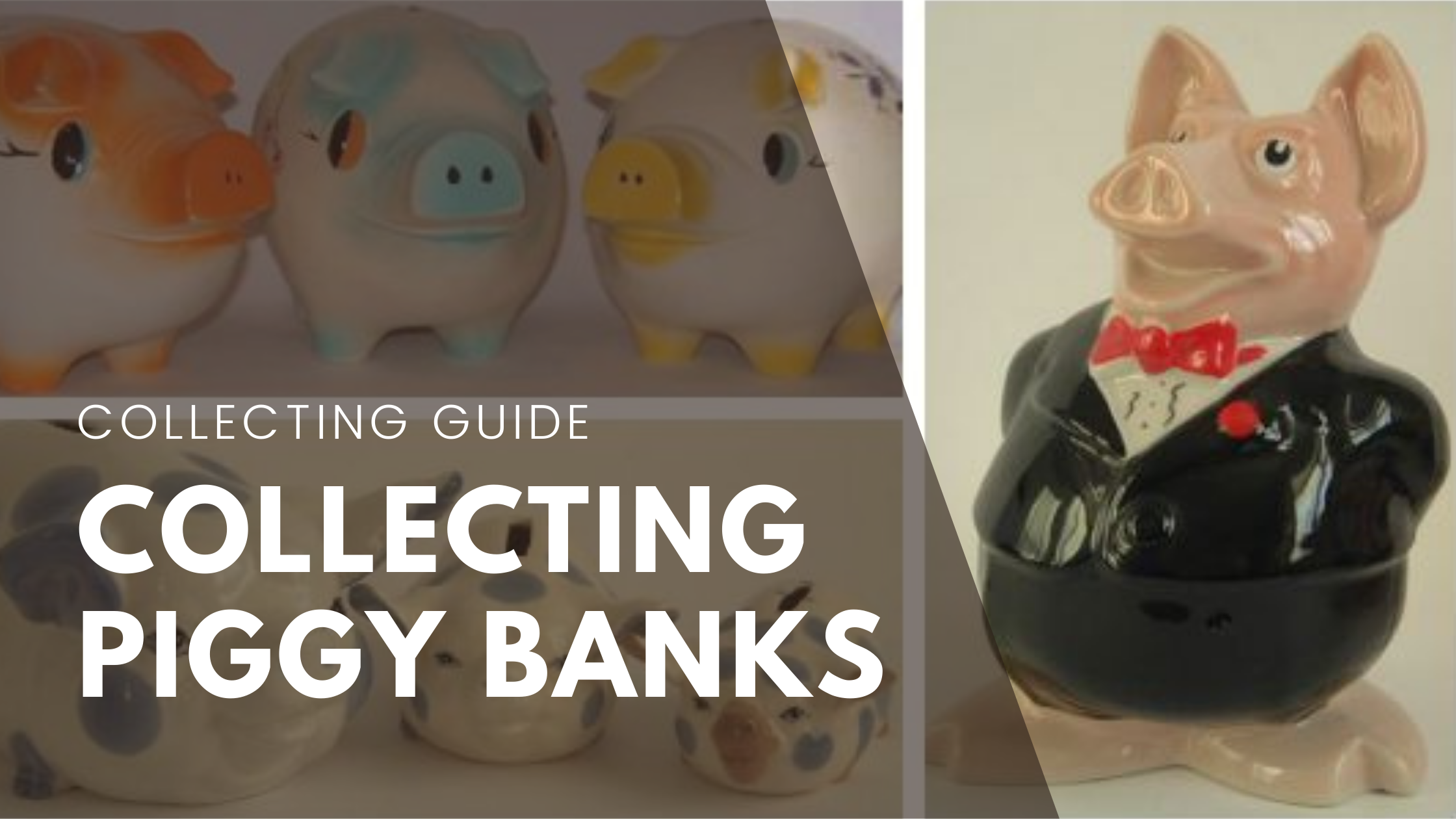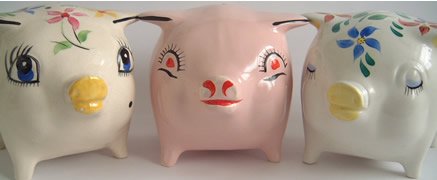Coins and Curiosities: Unveiling the World of Piggy Bank Collecting for Beginners
HISTORY OF PIGGY BANKS
You may be asking, “Why are banks shaped like pigs?” Well, there are two theories regarding the origin of the pig image in banks. One theory states that the pig is a derivative of pygg, orange clay pottery used during the Middle Ages for jars that stored household staples such as salt. Sometime during the 18th century in England, these jars began to evolve into hollow containers with a slot in the shape of a pig, making a visual pun on the clay’s name. Another theory is that the pig was considered a family's "food bank" and a symbol of good luck in many societies.
With early banks to retrieve the coins within the jar would have to be smashed, which explains why so few of these very old pig jars have survived. Most modern banks have a removable plug (often rubber) which saves the piggy banks from destruction, making them a fun collectible today.
At the beginning of the 20th century, prestigious ceramics manufacturers such as Belleek, Delft, and Quimper began to make piggy banks. Several potteries in Staffordshire, England, also made piggy banks, including the Ellgreave Pottery Company of Burslem, which produced a well-known bow-tied Mr. Pig Banks. Some of these well-dressed pigs had coin slots on the back of their heads, while others had slots along the front of the pig’s lapel.
During the post-war years, potters in the Netherlands, specifically in Makkum and Workum, designed piggy banks as souvenirs for the tourist market. Potters in Poland and Hungary began to sell their piggy banks in department stores such as Vroom & Dreesman around this same time. At the same time, Mexico produced inexpensive and lightweight ceramic piggy banks featuring distinctive handles on their banks.
As for the United States, the piggy bank tradition took the cute path and always remained consistent. In the 1930s, the American Bisque Company and American Pottery Company produced numerous figural piggy banks using slip-mold techniques. In the 1950s and 1960s, cartoon characters were used as a fun way to persuade kids to save their allowance. Being one of the most popular newspaper comics of the time, “Peanuts” by Charles Schultz inspired 40 different “Peanuts” banks, including a ceramic bank depicting Snoopy lying on his back on top of a hot dog.
Tips On Buying Piggy Banks
1. Do Some Research Before Buying
An excellent first step when searching for banks online is to begin searching online auction sites and sorting the results by the highest price first. This technique will help you know which banks and manufacturers are the best-selling and which will be the best investment.
You will also want to determine the type of banks you want to collect. Since piggy banks come in various sizes, styles, and materials, you may want to narrow your collection to a specific type of bank. The choice between mechanical piggy banks and still banks is also a choice that should be looked into. While limiting your collection to any area is unnecessary, you may find a natural affinity to one type over the other.
Guides such as Kovels' Antiques & Collectibles Price Guide 2015 can be helpful when buying and selling piggy banks with a view toward investment. There are also organizations such as the Still Bank Collectors Club of America, which has an annual convention in June that includes a members-only auction of over 400 banks.
2. Still vs. Mechanical Piggy Banks
If you are interested in the traditional "still" piggy bank, the cast-iron banks manufactured between the 1870s and the early 1930s are considered the most valuable from an investment standpoint. Early cast-iron banks were made by hardware foundries which were often out of business by the turn of the century. Foundries manufactured some later cast-iron banks as a way to diversify their offerings and stay in business during the lean years of the Great Depression, but by the mid-1930s, cast-iron still-bank production had come to an end.
For those interested in mechanical banks, an excellent place to start is with the Mechanical Bank Collectors of America. Their online scrapbook contains extensive information on the history of mechanical banks, including old advertisements, manuscripts, and photographs that can be searched by keyword. To get a feel for what appraisers are looking for in mechanical banks, visit the Antiques Roadshow website, where you can watch videos of banks being appraised.
3. Define Your Budget
The more effort you put into building your bank collection, the more you'll get out of it. As with any collecting pursuit, buying the best you can afford is a good rule of thumb. Since the condition is often the primary judge of value, remember you can upgrade your pieces as you find better quality items.
If you don't have a large budget to spend right away, though, don't worry. If an investment is your aim, then time will be on your side as long as you have the patience to wait out the market. Still-bank prices, principally for banks in excellent condition, are several times higher today than 20 to 30 years ago. As these pieces become more and scarcer, their value increases.
4. Know Where To Look
Years ago, collectible banks were generally easy to find, but the task has become more challenging. Still banks, in particular, are there to be found, but not nearly in the quantities they once were. Many high-quality pieces are already in collections, but that doesn't mean there still aren’t some great finds to be made. Start by searching through auction houses that specialize in piggy banks and toys. Other locations that have great potential are estate sales, flea markets, and local second-hand shops.
Online sources such as Craigslist, Etsy, and eBay can also be good sources, but be cautious when buying online. Make sure you know what you're looking for, and be on the lookout for reproductions, repairs, and repaints. Do not hesitate to question the seller if you have questions about an item’s condition or provenance. Reputable sellers will welcome all inquiries and strive to be transparent.
Collecting piggy banks is a hobby that people of all ages and budgets can enjoy. This hobby provides a unique gateway to a world of memories and stories, from rare and expensive finds to cheap, everyday treasures. Finding the perfect piggy bank can be a fun and rewarding experience, and whether you’re looking for a gift, a conversation piece, or a way to pass the time, piggy banks can fit the bill. Through careful selection and research, you can become part of a vibrant global community that seeks to preserve and celebrate the history of these simple yet charming objects. So join the party and get collecting!










